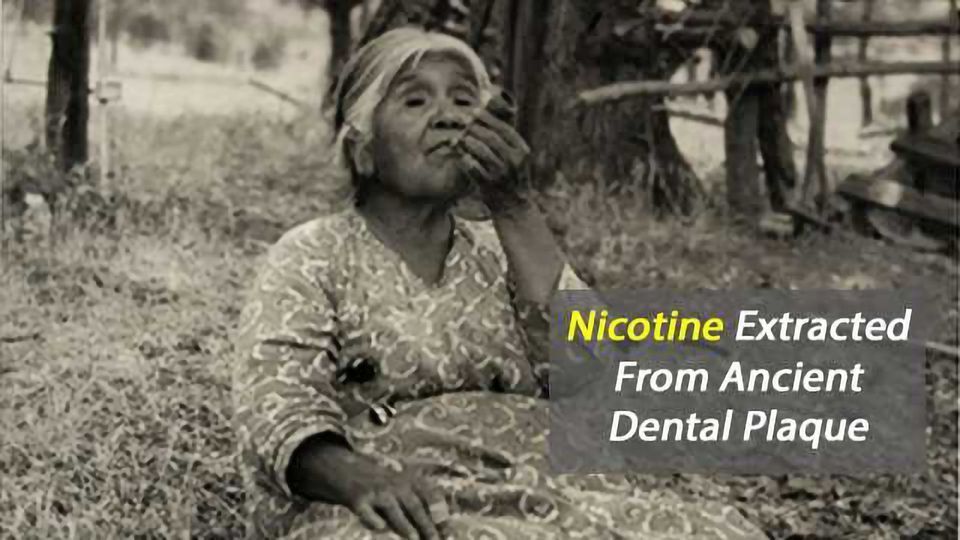Nicotine Extracted From Ancient Dental Plaque

Complete the form below to unlock access to ALL audio articles.
A team of scientists including researchers from Washington State University has shown for the first time that nicotine residue can be extracted from plaque, also known as “dental calculus”, on the teeth of ancient tobacco users.
Their research provides a new method for determining who was consuming tobacco in the ancient world and could help trace the use of tobacco and other intoxicating plants further back into prehistory.
“The ability to identify nicotine and other plant-based drugs in ancient dental plaque could help us answer longstanding questions about the consumption of intoxicants by ancient humans,” said Shannon Tushingham, a WSU assistant professor of anthropology and co-author of a new study on the research in the Journal of Archaeological Science Reports. “For example, it could help us determine whether all members of society used tobacco, or only adults, or only males or females.”
A new source of information
Tracing the ancient spread of tobacco in the Americas has traditionally relied on the presence of pipes, charred tobacco seeds and the analysis of hair and fecal matter. However, these items are rare in the archaeological record and are hard to link to particular individuals. As a result, tobacco use has been difficult to document archaeologically.
On the other hand, dental plaque adheres to the surfaces of teeth and mineralizes over time, preserving a wide range of substances that are in the mouth. It is easy to link to particular individuals because it can be removed directly from teeth.
Nevertheless, dental plaque was largely ignored by archaeologists until recently.
However, using modern and highly sensitive instrumentation, scientists have found they can detect and characterize trace amounts of a wide variety of compounds, including proteins, bacterial DNA, starch grains and other plant fibers in dental plaque.
Because nicotine is detectable in the dental plaque of contemporary smokers Tushingham and her collaborators wanted to find out if it also preserved in plaque taken from people who lived long ago.
She and David Gang, a professor in the WSU Institute of Biological Chemistry, Korey Brownstein, a graduate student in the WSU Molecular Plant Sciences Program, and Jelmer Eerkens, an anthropologist at the University of California, Davis, collaborated with members from the Ohlone tribe in San Francisco Bay to extract plaque from the teeth of eight individuals, buried between 6,000 and 300 years ago, and analyze it for nicotine.
Using ordinary dental picks, Eerkens and his team at UC Davis extracted the dental plaque from the ancient teeth and then sent it to Tushingham and Gang’s labs at WSU for analysis. The WSU researchers used liquid chromatography-mass spectrometry to test the samples for nicotine and other plant-based drugs like caffeine and atropine, a muscle-relaxant.
Among the samples they analyzed, two tested positive for nicotine, demonstrating for the first time that the drug can survive in detectable amounts in ancient plaque. One of these individuals, an adult man, was also buried with a pipe. A surprise came from the molar of an older woman, which also tested positive for nicotine.
“While we can’t make any broad conclusions with this single case, her age, sex, and use of tobacco is intriguing,” Eerkens said. “She was probably past child-bearing age, and likely a grandmother. This supports recent research suggesting that younger adult women in traditional societies avoid plant toxins like nicotine to protect infants from harmful biochemicals, but that older women can consume these intoxicants as needed or desired.”
While the researchers did not detect evidence of any other plant-based drugs in this particular study, they believe dental plaque could be used help trace the use and spread of other intoxicants as well.
“We think a wide variety of plant-based, intoxicating chemicals could be detected in ancient dental plaque,” Brownstein said. “It really opens up a lot of interesting avenues of discovery.”
This article has been republished from materials provided by Washington State University. Note: material may have been edited for length and content. For further information, please contact the cited source.
Reference
Jelmer W. Eerkens, Shannon Tushingham, Korey J. Brownstein, Ramona Garibay, Katherine Perez, Engel Murga, Phil Kaijankoski, Jeffrey S. Rosenthal, David R. Gang. Dental calculus as a source of ancient alkaloids: Detection of nicotine by LC-MS in calculus samples from the Americas. Journal of Archaeological Science: Reports, 2018; 18: 509 DOI: 10.1016/j.jasrep.2018.02.004.

